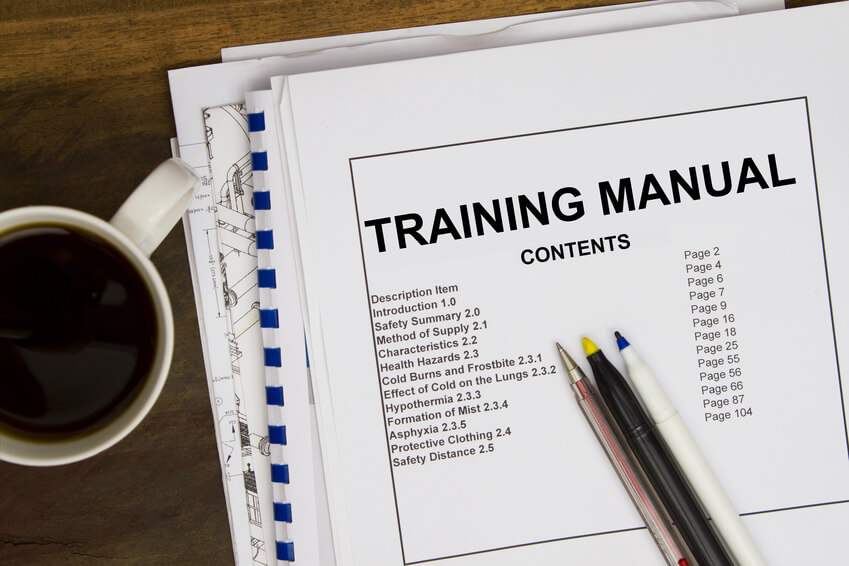
Hiring new employees for your power washing business is a huge step forward. But bringing them on without clear training is a recipe for inconsistency, callbacks, and even damage to client property. That’s why creating a training manual isn’t just helpful — it’s essential. 📘✅
A solid manual does more than just outline steps. It helps protect your equipment, uphold your reputation, and empower new hires with confidence. Whether you’re hiring your first employee or building a team, this guide will walk you through how to create a power washing training manual that keeps your business running smoothly and safely.
📋 Why You Need a Training Manual
Let’s face it — verbal instructions and shadowing are not enough. A written manual gives your team:
- 🔄 Consistency in how services are performed
- 📚 Clear procedures and safety rules
- 💬 A reference guide they can go back to
- ⛔ A way to prevent costly mistakes
It also helps you scale. When you’re training your 5th or 10th employee, you won’t have to start from scratch every time.
🧱 Step 1: Outline Your Core Sections
Start by mapping out what your manual should cover. Common sections include:
- Company Introduction & Values 💼
- Job Roles & Expectations 👷
- Safety Protocols & Procedures ⚠️
- Equipment Handling & Maintenance 🧰
- Cleaning Techniques & Surface Guidelines 🏠
- Customer Service Standards 🗣️
- Daily Workflow & Checklists 📆
- Troubleshooting & FAQs ❓
- Emergency Procedures 🚨
- Sign-Off Page for Acknowledgement ✍️
You don’t need to write a novel. Just keep each section clear, specific, and actionable.
Browse Amazon For Top Books On Creating Employee Handbooks
🏢 Step 2: Introduce Your Company
Start the manual with a warm introduction. Share who you are, what your business stands for, and your commitment to quality and safety.
Example:
“At Power Washing Pros, we pride ourselves on being respectful, reliable, and results-driven. We don’t just clean — we restore curb appeal and protect homes and businesses.”
This sets the tone and reinforces your mission to new hires. 🙌
🦺 Step 3: Define Safety Procedures First
Nothing is more important than safety. This section should include:
- Wearing PPE (gloves, goggles, boots) 🧤🦺
- Understanding chemical handling and SDS sheets ⚗️
- Safe ladder use and fall prevention 🪜
- Electric and gas equipment precautions ⚡⛽
- How to handle accidents or injuries 🚑
Add pictures or diagrams to help visual learners. Safety should be non-negotiable and easy to follow.
🧰 Step 4: Detail Equipment Use & Maintenance
New employees need to know:
- How to start and shut down your machines
- How to assemble hoses, nozzles, and wands
- What to check before and after every job
- How to clean and store equipment
Include maintenance tips like:
- Changing oil regularly 🛢️
- Checking for leaks or worn seals
- Flushing the system after chemical use
- Proper winterization ❄️
A short troubleshooting chart is also helpful — like what to do if there’s low pressure or a no-start issue.
🏡 Step 5: Explain Cleaning Techniques by Surface
Not every surface can be treated the same. Train employees on:
- Concrete: High PSI and surface cleaner
- Siding: Soft wash technique with detergent
- Wood decks: Low pressure and wide fan tips
- Roofs: Always soft wash — never high pressure!
- Fences: Moderate PSI with care to avoid splintering
Include which nozzles to use, average dwell times, and which chemicals are appropriate. This is where your expertise becomes your competitive advantage. 🎯
🗣️ Step 6: Include Customer Interaction Guidelines
Your team represents your brand. Help them succeed with:
- How to greet customers at the door
- What to say during pre-job walk-throughs
- How to explain services and answer questions
- How to handle complaints calmly and professionally
Include scripts or examples like:
“We’ll be starting on the back patio. If you hear the machine running, don’t worry — it’s perfectly normal. Let us know if you have pets inside.”
Great communication = better reviews. ⭐⭐⭐⭐⭐
📆 Step 7: Provide Daily Checklists
Structure helps new employees stay efficient. Add:
- ✅ Morning checklist (equipment load, fuel, PPE)
- ✅ Job-site checklist (pre-rinse, protect outlets, confirm areas)
- ✅ End-of-day checklist (clean gear, store hoses, log jobs)
A simple PDF or laminated page in the truck makes a world of difference. 🛻📋
📚 Step 8: Add Troubleshooting Tips & FAQs
Include answers to things like:
- “What if the machine won’t start?”
- “What if the water pressure drops mid-job?”
- “What if the customer isn’t home?”
- “What if a chemical runs out?”
These pages help reduce stress and empower employees to solve minor issues on the job. 🧠
✍️ Step 9: Finish With a Sign-Off Page
Wrap up the manual with a sign-off page acknowledging that the employee has read and understood the material. This is important for:
- Accountability
- Legal protection
- Reinforcing your expectations
Make it official with a date and signature line.
🔄 Keep It Updated
Your manual shouldn’t collect dust. Review it:
- Every 6 months
- After major equipment upgrades
- When you add new services or change chemicals
Ask your team what’s missing or confusing and improve it over time. 📈
🧼 Final Thoughts
A training manual is one of the most powerful tools in your business. It takes the guesswork out of onboarding, improves safety, boosts service quality, and helps your brand grow consistently. 💼🚿
By investing the time to build it right, you’re setting up your power washing business for long-term success — one clean surface (and confident employee) at a time. 💪✨






